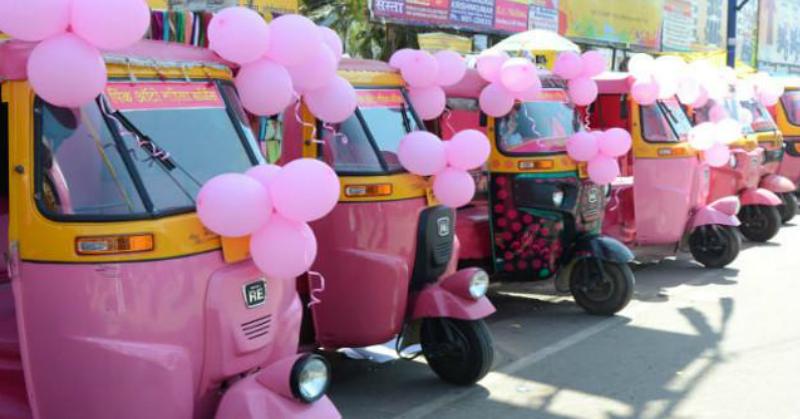On Tuesday, the ‘Pink’ economic survey was presented, displaying the horrific reality of a 12% drop in the percentage of working women and the ever-raging obsession with male babies. Wednesday, Bengaluru decided to introduce 500 pink autos in the city to ensure women’s safety by equipping them with GPS trackers and CCTV cameras. Pink, for me, has always been a colour of contradiction. Combined with laces and frills, it has made me feel like a delicate flower. With slogans on hoardings in a march, it has put me in this strange cocoon of collective identity of being a woman. In a world run by patriarchy and an overwhelming misogyny that trickles down to almost every aspect of our lives (contrary to what Beyonce says!), the dilemma is inescapable.
Also Read: Which Type Of Feminist Are You
When I read the news, the question that popped up in my head was – why is everything women-related represented by the colour pink? If you’re anything like a couple of my colleagues, you might just say I am nit-picking on the ‘good news’, but hear me out, that’s the least we can do in this world, anyway.
Why Pink And Since When?
The highly polarized colour has a history of its own. Jo B. Paoletti, author of Pink and Blue: Telling The Boys From The Girls In America pointed out that until the second half of the 20th century, the colour pink was never associated with the female gender. In fact, in Germany, blue was the colour for women since it was associated with Virgin Mary. It was mainly after World War II, that femininity was wrapped up in pink and sold commercially. So if you think about it, the colour divide isn’t much older than most of us. There was an urgent insistence to associate women with something definitive, but why? Was there a fear we’d associate with everything?

Are There Not Enough Divides Already?
How many men among your friends can say ‘I like pink’ out loud in a public space? The point is, while my fellow feminists and I find solace in the Instagrammable colour, Feminism is so much more than that. Every colour should be associated with feminism, every gender should be able to wear the colour with pride. While pink autos, theoretically, sound like a great plan, I’d rather have autos in every colour safe for human beings, in general.
Whatever Happened To The Other Pink Autos?
Delhi, Surat, Assam, Bhubaneswar and Gurugram are some of the places that have previously initiated pink autos for women. In Gurugram they were launched twice and failed. In Delhi too, the numbers are negligible. In the 2011 census, Bengaluru had a female population of 4,598,890. An approximate 4.5mn women with 500 autos – is it change we are aiming for or just some social media traction?

Tum Mujhe Pink Do, Main Tumhe Identity Dungi (NOT)
To put it bluntly, I am a woman and I do not associate with the colour Pink. I am, in fact, indifferent to it. I don’t want pink autos or pink metro coaches. I want CCTV cameras in every auto that I get into. I want gender-sensitization programmes as a necessity for every public transport driver. I want sex education in all public and private schools. I want to be able to walk out of a party at 9 PM in Delhi’s Hauz Khas Village and not have to call the Police because no auto-wallah will drive me till the metro. Don’t pacify me with the colour (no matter how much it flatters my skin tone), honour my rights.
This would also be the right time to quote Barbara Ehrenreich when she says, “So welcome to the Women’s Movement 2.0: Instead of the proud female symbol – a circle on top of a cross – we have a droopy ribbon. Instead of embracing the full spectrum of human colours – black, brown, red, yellow, and white – we stick to princess pink. While we used to march in protest against sexist laws and practices, now we race or walk ‘for the cure.’ And while we once sought full ‘consciousness’ of all that oppresses us, now we’re content to achieve ‘awareness,’ which has come to mean one thing – dutifully baring our breasts for the annual mammogram.
No other colour has such power to peeve women or tempt them to rip it up and reclaim it. Somehow it encapsulates the whole predicament – how American women now earn more advanced degrees than men but still earn 77 cents to every male dollar. Can women finally bridge the pay gap? Can pigs learn to fly? Well, maybe they can – after all, they’re pink, too.”
Images: Shutterstock, DNA



